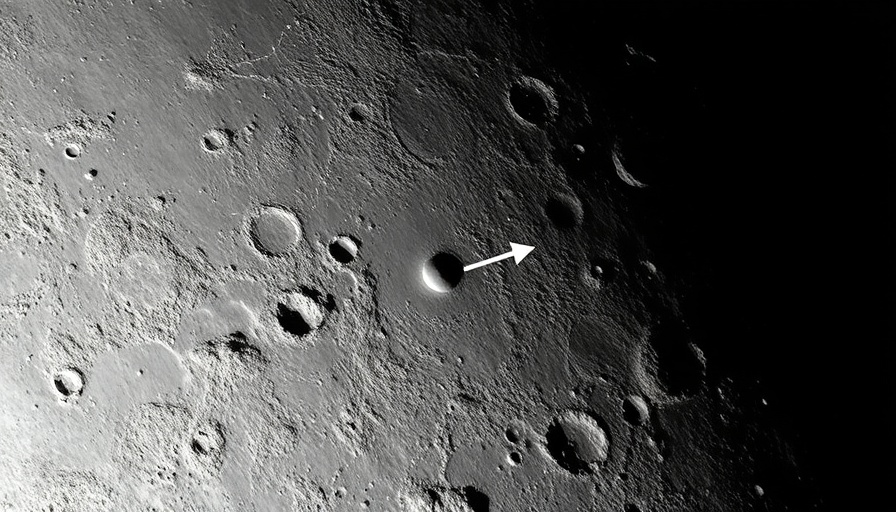
NASA's Photographs Reveal Insights into Lunar Exploration
Recent images from NASA's Lunar Reconnaissance Orbiter (LRO) provide significant insights into the evolving narrative of lunar exploration, capturing the crash site of a Japanese lunar lander deliberately named Resilience. On June 11, 2025, weeks after the lander's unfortunate crash in the Mare Frigoris, or Sea of Cold, these photographs highlight both the potential and challenges facing private space ventures. This crash marks the second failure for Tokyo-based ispace within two years, raising questions about the complex dynamics involved in lunar missions.
The Importance of Imaging Technology in Space Exploration
The capabilities of the LRO, which has been orbiting the Moon since 2009, offer unprecedented resolution in mapping the Lunar surface. These images, with their clear representation of the impact site, serve as vital data for scientists and engineers who study the Moon's geology and the implications of crash landings. They reveal not only the immediate damage caused by high-speed impacts but also the context in which these missions operate. This highlights the crucial need for advanced imaging technology as humanity aims for sustainable and successful lunar exploration.
Learning from Failures: The Road Ahead for Private Space Companies
The difficulties faced by ispace emphasize a broader trend in the private aerospace sector, where failures can often precede significant leaps forward. SpaceX’s early unsuccessful missions are a prime example of the trial-and-error process inherent in space exploration. While many may view the crash of the Resilience lander as a setback, it could provide invaluable lessons in engineering and operational procedures. By analyzing the root causes of failures, private companies can refine their approaches to future missions.
The Future of Lunar Exploration and International Collaboration
The lunar landscape is rapidly becoming a canvas for international collaboration as nations and private companies seek to establish a presence on the Moon. NASA’s partnership with international entities and the expanding involvement of countries like Japan signifies a shift towards a more integrated approach to space exploration. As each mission—successful or otherwise—paints a clearer picture of the lunar surface, the data garnered serves as a stepping stone for future aspirations such as lunar bases and resource utilization.
Public Interest in Space Exploration
As these missions make headlines, public interest in space exploration continues to grow. People are drawn to the stories of triumph and failure, understanding that each contributes to our collective advancement in the final frontier. This crash, while unfortunate, perhaps serves as a motivational tool to rally support for ongoing and future lunar missions. Educators and communicators have the opportunity to utilize these events to engage younger generations in the sciences and inspire future innovators.
In conclusion, NASA's recent photography of the Resilience lander crash site not only highlights the immediate aftermath of lunar exploration failures but also sparks critical discussions about the trajectory of future lunar missions. Enthusiasts and professionals alike are encouraged to follow developments from ispace and similar programs, as these narratives unfold in the new era of lunar exploration.
 Add Row
Add Row  Add
Add 




Write A Comment